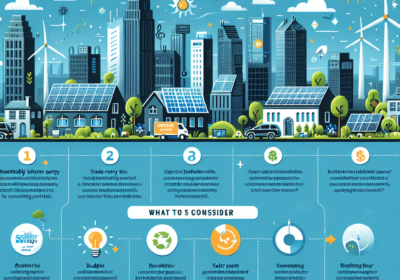A Guide to Solar Street Lights
Solar street lights are solar-powered devices that function by absorbing sunlight during the day. The lights are powered by an automated switch called a photoreceptor, which detects low levels of sunlight and turns the lights on or off. They can be set to work throughout the entire night or on a specific schedule, which is adjustable.
How Do Solar Street Lights Work?
The light fixture itself is rechargeable, which means that the electricity generated by the solar panel is stored in the battery to power the light fixture during the night. The type of battery used is important, as the capacity and life span of the battery will determine how long the light will last. Common battery types include lead acid and gel cells. Lithium-ion batteries are becoming popular because of their compact size.
Solar street lights are a growing trend in Australia. Many are used in remote railway crossings, highways, construction, and other applications. Some are even used in bikeways and car parks.
Solar street lights work by absorbing sunlight through photo-voltaic panels installed on lighting structures. This energy is then used to power a fluorescent or LED lamp. Some also include sensors to detect when there is sunlight outside. They generally remain lit throughout the night. However, older models of solar street lights used non-fluorescent lamps.
Solar street lights are becoming more popular worldwide. They offer a number of benefits that make them the right lighting solution for any neighborhood. Not only do they reduce energy bills, but they also have a low maintenance requirement. Solar street lights are also environmentally friendly and don’t use the grid. Because they don’t rely on the electrical grid, there’s no risk of overheating.
Advantages of Solar Street Lights
One of the biggest advantages of solar street lights is their durability. The batteries store the energy produced by the solar panel and then provide energy to the light fixture during the night. The type of battery you choose is very important as it will determine the life expectancy of the light. There are two main types of batteries: lead acid and gel cell deep cycle. Lithium-ion batteries are becoming increasingly popular due to their small size and high energy density.
Another advantage of solar-powered light is its efficiency. While older fixtures waste light and are not task-oriented, solar lights use LED lights that push light directly to the areas you need it. This feature improves lighting and uniformity and lowers electricity costs. Another benefit of solar lights is their versatility. You can even use them during winter months, when the days are shorter but the sun will still supply sufficient energy to power them.
Apart from being durable, solar street lights are also environmentally friendly. Since they produce their own electricity, they are not reliant on the grid and therefore do not incur electricity company fees. Furthermore, they require less maintenance than their conventional counterparts. Their fewer moving parts and low cost mean they can provide years of trouble-free service.
Another advantage of solar street lights is that they do not require electrical work or wiring. Their main components consist of a panel, a lithium battery, a controller, and an LED light. You only need to attach them to a pole or a flat surface. In addition, they require no additional resources or trenching.
Solar lighting also protects biodiversity in sensitive areas. Solar street lighting systems regulate the intensity of light throughout the night, ensuring the safety of migratory birds and other wildlife. By providing better illumination, solar street lights can extend park and sports facilities’ hours. They also promote better traffic flow and reduce accidents.
Modern solar street lights feature an embedded solar panel and a battery management system. The batteries are rechargeable and can be reused. The battery also has a PIR sensor that detects human movement. The light will automatically turn on and off when humans are nearby. Another advantage of solar street lights is that they are easy to install and transport.
Another advantage of solar street lights is their longevity. While traditional street lights need to be replaced regularly, solar lights last a long time. They do require a higher initial investment, but they will be less costly in the long run.
A solar-powered lighting system helps communities reduce their carbon footprint, which in turn helps in reducing the overall costs of running the city. It also reduces energy bills and allows residents to spend more time outdoors. It also reduces the risks of crime and promotes a safer environment.
What Should I Look For When Buying Solar Street Lights?
If you’re planning to install solar street lights, there are several factors to consider. For starters, you should know the power rating of the light. This will determine how efficient the light is and how much power it can produce. It’s also a good idea to pay attention to the service period.
A solar street light should be durable. The material should be resistant to UV, weather, and moisture. Solar lights should be able to withstand temperatures down to minus 40 degrees. Some also feature a remote control. You can use this to turn on and off the light from up to 33 feet away.
The battery life of a solar street light is also a very important consideration. The battery should last for at least six hours. Moreover, it should be able to produce more light when there is less sunlight. A battery with a high capacity should be able to power the light for up to eight hours.
If you want a solar street light with a long lifespan, you should check for a solar street light manufacturer that offers a warranty. Some of the best warranties cover all of the components for 10 years. However, you should note that these warranties are not applicable if the light has been damaged or used improperly.
The solar panel should also have a higher capacity. This will allow the solar panel to charge the battery for longer. Good power storage also allows the solar street light to run even when there is no sun. If it can withstand varying temperatures, a battery will last for years.
The battery life of a solar street light depends on its quality and how well it’s cared for. A good quality lithium iron phosphate battery should last between three and five years (Source). Similarly, a good quality LED bulb should last five to ten years.
Choosing the right solar street light can be difficult. You need to do your research and talk to professionals if you’re not sure about the product you’re looking for. Remember, price is relative, and you’ll see the benefits over time. So, don’t rush into buying a cheap solar street light.
Solar street lights are a good alternative for conventional street lights. In fact, the global solar street lighting market is projected to reach $5 billion by 2024 (Source). As solar panels continue to become more affordable, they will be available to the average consumer. Moreover, since solar street lights don’t use the power grid, they are reliable regardless of the weather.
When buying solar street lights, consider their design and functionality. Modern solar street lights use advanced photo voltaic technology to absorb sunlight and turn it into electricity. Their solar panels contain polycrystalline or monocrystalline photovoltaic cells. When sunlight hits the photovoltaic cells, volts are transferred to a battery attached to the solar panel. The battery will be recharged in about six to eight hours, depending on the quality of the solar panel.
Cost of solar powered street lights
The cost of solar powered street lights is very reasonable when compared to other types of lights. A stand-alone solar street light system can cost between $2500-$3500 for the lights and an additional $1000 for installation (source). Some companies, like EnGoPlanet, offer high-quality solar street light solutions for a low price. Taking current electricity rates into account, the cost of a stand-alone solar street light system comes to $484000 (source). The savings in electricity are evident every year.
The cost of a two-in-one solar street light can range from $2000 to $4000 (source). These street lights are very durable and can provide optimum lighting. They are also cheaper than split-type street lights. You should also keep in mind that installation costs will be additional, so be sure to factor that in when evaluating costs.
Solar street lights can be used in many locations. They are ideal for highways and main roads. Some models can reach up to 8m in height and are suitable for roads with a distance of 30-35m between the poles. Prices vary. You can compare prices from various companies. Choosing the best solar powered street light for your project is essential.
The solar panel will recharge the batteries during the day, which will allow the street light to function. The solar street light lights will run from dusk to dawn and split time. They can also be configured to run autonomously or to use a micro-grid that connects them. The pole can be as tall or as low as the user prefers.
The cost of a solar powered street light is more expensive than the cost of a traditional street light, but in the long run, it is much cheaper than the maintenance costs of traditional street lights. Traditional street lights will require a lot of maintenance. Solar powered street lights are also more environmentally friendly.
Types of solar powered street lights
There are several different types of solar powered street lights on the market. Some include a light source, solar panel, and battery. Others are just a light fixture with a pole and battery. These types of solar street lights offer many benefits, including saving money and energy. However, before purchasing solar street lights, make sure that you understand what you’re getting yourself into.
Most solar powered street lights have a battery that stores energy during the day and provides power to the LED light at night. The capacity of the battery and life cycle are important factors to consider. Also, most of these street lights feature a controller to control charging and lighting. Some controllers are programmable.
Another type of solar street light is the hybrid solar street light. This system uses a battery and a solar array, which is connected to a power grid. These lights are useful for areas where weather conditions change often. The battery is usually placed underground or on a street lamp pole. Some hybrid solar street lights utilize wind and diesel power as fuel. Both types of solar street lights require a power management center to regulate the amount of power they generate.
Solar street lights can also be self-contained. Stand-alone systems don’t connect to an electricity grid, making them popular in rural areas. The energy produced by the solar panel is used to power the LED lamp. Direct-coupled systems, on the other hand, don’t have a battery, so they’re purely solar-powered.
So, there are a few different types of solar street lights, and their costs may vary depending on the type you choose. The main differences between these lights are their charging time, and how much light they can produce in poor weather. Some solar street lights require six to eight hours to fully charge. Depending on the internal components and solar panel, the runtime may range from 10 to 12 hours.
These lights have adjustable poles and brackets that make them easy to install. These solar lights can be easily placed anywhere, and they can be decorated easily.
The latest models of solar street lights use wireless technology to control their operation. They can even be used as part of a network. The panels themselves convert solar energy into electricity and are divided into two main types: monocrystalline and polycrystalline. Both have advantages and disadvantages, but overall, they offer high conversion rates.
A high-quality solar street light should last at least 10 to 20 years. However, the lifespan of the solar panel will depend on the quality of the components and how well they are maintained. Also, look for an extended warranty on the solar panel, the longer the warranty, the better.
Requirements for installing solar powered street lights
When installing solar powered street lights, make sure to follow the instructions carefully. Ensure that the ground is level and that you have four screws to secure the lamp to the ground. You should also position the Basis Cage so that one of its sides is parallel with the road. This will form the base for the street lamp.
Solar street lights typically contain LEDs. These are energy-efficient and emit zero UV rays. LEDs also produce higher lumens than traditional lighting solutions. LED dealers will be able to help you determine how many lumens per watt you will need and what kind of light distribution pattern will be best for your area. This will ensure that your solar powered street lights are reliable and achieve the maximum performance.
The most important consideration when installing solar powered street lights is the location. You must make sure that the area will receive sufficient amounts of sunlight. The more sunlight the panel absorbs, the more energy it can store in its battery. You must also keep in mind that the position of the sun changes during the day. Make sure that you consider topography when selecting a location.
Once the area is finalized, the next step in installing solar powered street lights is to determine the distance and height of the poles. In most cases, solar street lights should be installed at a distance of about 10 to 15 meters apart. Depending on the lighting needs, you can also install solar powered street lights at a distance of four to five meters.
The installation site must be level and free of obstructions. Be careful not to place the solar panel near any heat source, as this can interfere with the light sensor in the solar panel. The pole should also be placed on a solid, level surface above the water line. A certified contractor should pour the foundation and install the PVC tube.
A solar street light should also be connected to a battery via a cable. The battery cable should be attached to the foundation using thin wire. Once the battery is attached, the cable should be connected to the controller and solar panel according to the technical requirement. Make sure that the positive and negative poles are not reversed, as this can damage the controller. It is also recommended to install a dual-mode electric power supply.
How Long Does a Solar Street Light Last?
Solar street lights can last for a long time. The lifespan depends on the model and the amount of sunlight that it receives during the day. Cheaper models are often not very long lasting and may require a large battery in order to work at night. The cost of these lights also varies by geography and solar insolation in winter.
Most solar lights last for over a decade. However, they do require periodic maintenance. Some need to be replaced with a new battery every five to seven years. They can cost about $1000 each time. That means that solar lights aren’t cheap, but they are a better long-term investment than other lighting systems.
If you’re not sure which type of solar street light is right for your needs, you should consult the manufacturer’s recommendations.
To get the best possible solar street light, you should look for one that uses good quality materials. A good quality battery will last for several years. But, it’s important to note that the lifespan of a solar street light is determined by the battery’s discharge and recharge cycles.










